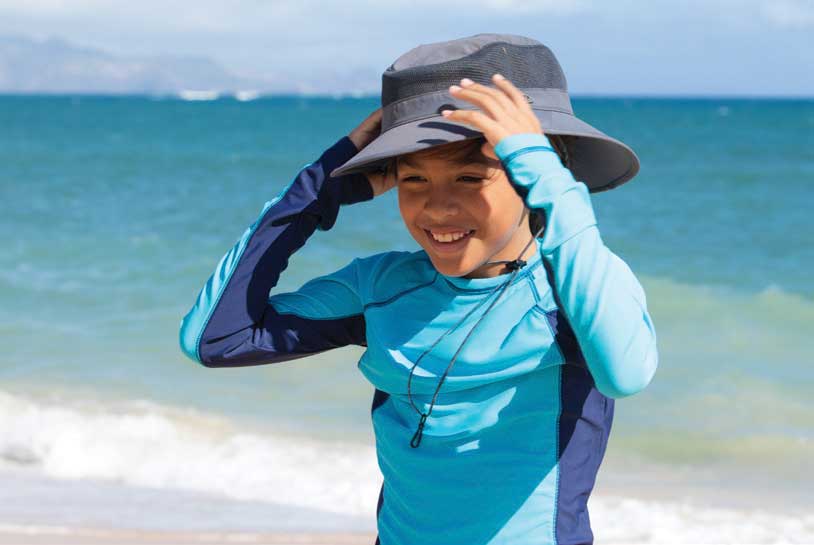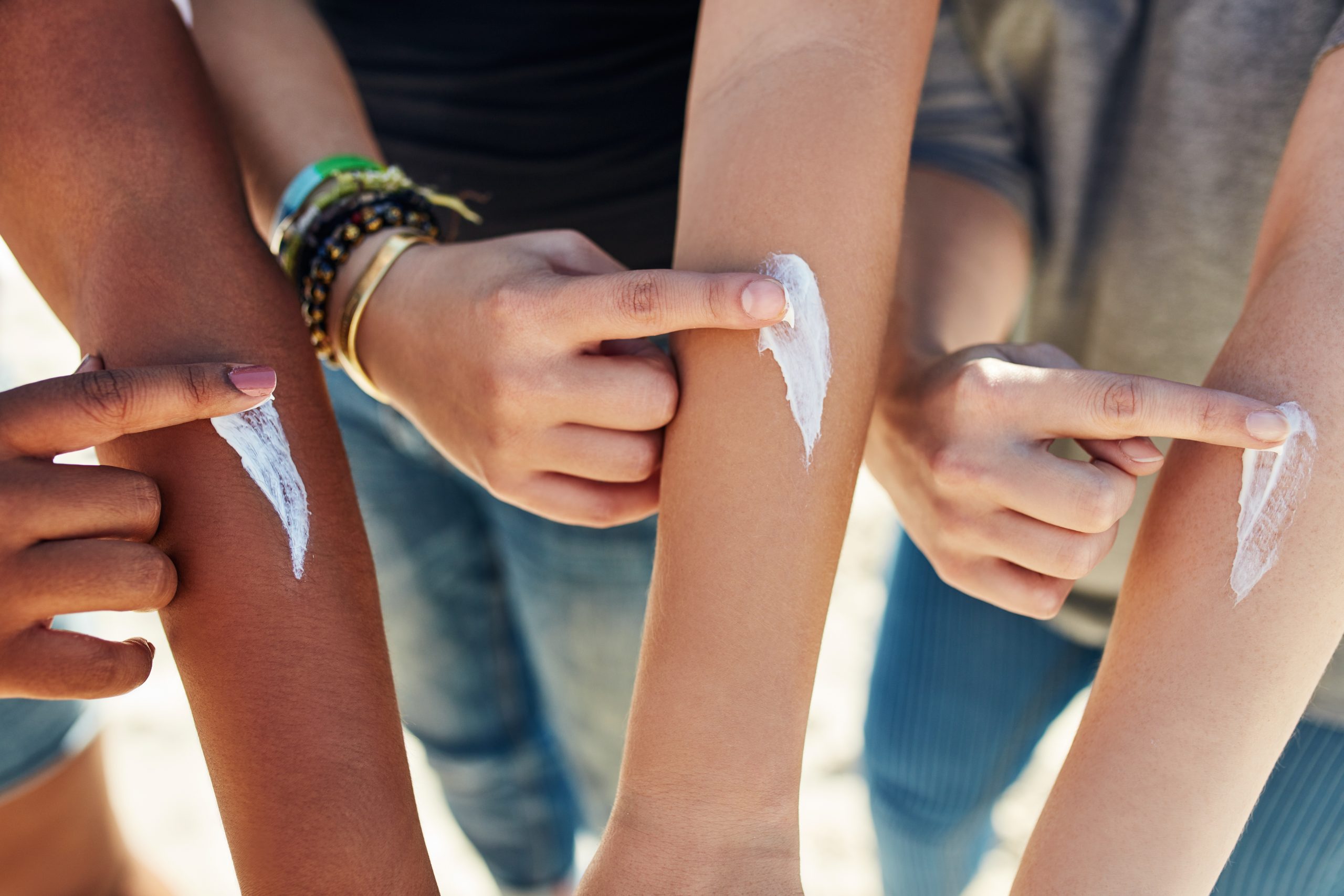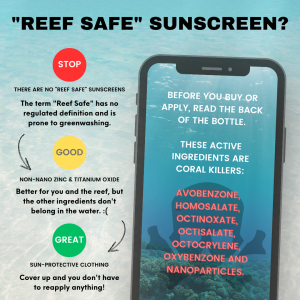If you love the ocean, coral reefs and marine wildlife, please show that love by taking a good look at your sunscreen bottle.
Many sunscreens that are labeled “reef safe” actually contain ingredients that are harmful to corals, fish and marine wildlife. Because the term “reef safe” has no legal definition, itʻs up to you, as a consumer, to read the label and learn which sunscreen ingredients to avoid.
 The County of Maui banned the sale, distribution and/or use of non-mineral sunscreen as of October 1, 2022. This means only mineral-based sunscreens are now allowed for sale or use in Maui County.
The County of Maui banned the sale, distribution and/or use of non-mineral sunscreen as of October 1, 2022. This means only mineral-based sunscreens are now allowed for sale or use in Maui County.
Mineral-based sunscreens only use minerals (zinc oxide and titanium dioxide) as active ingredients. Both of these ingredients occur naturally and are rated as GRASE (Generally Recognized as Safe & Effective) by the FDA. They are the only two sunscreen ingredients with this FDA designation.
This new Maui County law is in addition to an existing State of Hawaiʻi law that bans the sale of sunscreen products containing oxybenzone and octinoxate, two common sunscreen ingredients that “have significant harmful impacts on Hawaii’s marine environment and residing ecosystems.” That law went into effect in January of 2021.
Donʻt wait to switch to sunscreens that are safer for our coral reefs and marine life. Read the labels and switch to sunscreens that are mineral-based today. Let us help you get started.
Why the State of Hawaii banned sunscreens containing oxybenzone and octinoxate
Oxybenzone and octinoxate cause developing corals to bleach, baby corals to die, and lead to genetic damage in corals and other organisms, reported a study published in the journal Archives of Environmental Contamination and Toxicology in 2015. The study also found both chemicals can increase reproductive diseases in creatures from sea urchins to parrotfish and mammal species similar to the Hawaiian monk seal.
Oxybenzone has a toxic effect on corals at a concentration of 62 parts per trillion – equivalent to one drop in six-and-a-half Olympic-size swimming pools. Up to 6,000 tons of sunscreen are estimated to wash into coral reefs around the globe each year. Rather than being evenly distributed, much of that sunscreen is concentrated at popular diving, swimming, and snorkeling sites.
Switch to mineral-based sunscreens and you’ll avoid products that contain these reef-harming chemicals.
To report violations of Hawaiiʻs State Sunscreen Law, please email [email protected] or call 808-707-5056.

Protect the reefs:
Use only mineral-based sunscreens and sunblocks

1. Check the ingredient list on your current sunscreen and toss out products that are not mineral-based. Shop carefully for replacements.
2. Check the ingredients of your skincare collection, too. Moisturizers, face creams, lip balms, and even some shampoos offering “SPF protection” probably contain oxybenzone and octinoxate.
3. Choose products with zinc oxide or titanium dioxide as the active ingredient. Both are mineral sunscreens, which sit on top of your skin (rather than get absorbed into your skin and bloodstream).
Zinc oxide and titanium dioxide both protect against UVA and UVB rays. Zinc oxide protects against UVB, UVA1 and UVA2 rays. Titanium dioxide protects against UVB and UVA2 rays, reports the Skin Cancer Foundation.
Choose non-nano mineral-based sunscreens. Nano-particles (smaller than 100 nanometers) will enter your bloodstream and affects marine life too. Non-nano particles wonʻt.
4. Try different brands to find one that works best for you. There are clear zinc mineral-based products as well as those that are lighter and easier to apply than others.
5. Avoid spray-on products. These leave residue on the sand or shore that washes off into the ocean during high tides or rainstorms.
6. Reduce your need for sunscreen. Cover up with a hat, rash guard, beach umbrella and maybe even swim tights (made with stretchy, quick dry fabric).
Bonus: Zinc oxide and titanium dioxide are highly effective sunscreens.
1. Zinc oxide and titanium dioxide work as soon as you apply them because they physically block the sun. It is best to apply sunscreen in front of a mirror to be sure you don’t miss any spots.
2. Both zinc and titanium dioxide are water resistant. To be safe, reapply every two hours or after swimming or playing in the ocean.

Donʻt trust the “reef safe” label
Worldwide, coral reefs are in danger, and switching to a mineral-based sunscreen option is one way you can help. Donʻt trust the “reef safe” label. Read the ingredients and only choose products with the main ingredient of titanium dioxide or zinc oxide.
Scientists are finding that other common petroleum-based and chemical-based sunscreen ingredients can wash off your skin and harm or kill coral reefs and fish, even in small quantities. If your sunscreen includes avobenzone, homosalate, octinoxate, octisalate, octocrylene, oxybenzone, or nanoparticles, please DO NOT USE IT in or around the ocean.
Instead, please use non-nano, mineral-based sunscreens only.
Even if you live away from the ocean, keep in mind that the chemicals you wash off your body eventually find their way into the water table and ultimately into the sea. When you’re home, do a good turn for coral reefs everywhere by choosing mineral-based sunscreen.
Provided as a public service by the County of Maui Office of Economic Development and Maui Nui Marine Resource Council.


